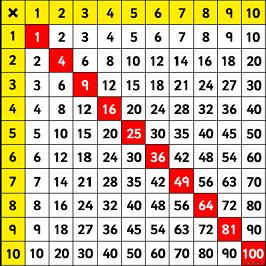|
Newton had made a mistake, and this lady figured it out

Émilie du Châtelet, portrayed in the documentary, Einstein's Big Idea (2005)
Émilie du Châtelet (1706-1749), one of the great female scientists of history, published many scientific papers, plus a French translation of Newton’s Principia.
However, her growing competence as a physicist led her to suspect that Newton had made a mistake in his theories on motion. According to Sir Isaac’s thinking, the energy of a moving object might be calculated simply as mass times velocity.
the substantially understated energy
But du Châtelet came to believe that this resultant, predicted energy had been substantially understated. She learned that the German mathematician Leibniz, a co-creator of calculus with Newton, contended that moving objects possessed, what he called, a “living force,” by which he meant to express, an unaccounted for extra energy in moving objects.
Critics called this “living force” a superstition, but du Châtelet believed that Leibniz was on to something. Leibniz insisted that the energy of a moving object could not be quantified simply by mass times velocity but required mass times velocity squared.
Squaring a number can take us to much larger numbers very quickly: for example, 5 + 5 = 10, but 5 squared, or 52, is 5 x 5 = 25.

Unwilling to relinquish her best judgment concerning the energy of motion, she discovered an experiment concerning lead balls dropped into a pan of clay. She adapted this to her purposes and found the data she needed.
the experiment
A lead ball is dropped from a pre-determined height into a pan of clay. The force of the ball, from that particular height, makes a corresponding impression on the clay.
Next, a second lead ball is dropped from a higher height, which, according to Newton’s formulas, is calculated to double the speed of the first ball.
4 times the impact, not 2
Newton predicted that the force of the second ball would be 2 times that of the first ball. But Leibniz asserted that, if we double the speed of the second lead ball, the force of impact would not be twice that of the first ball, but 4 times the impact.

notice that the impression of the second ball, on the right, is
4 times as deep as the impression of the first ball, on the left
Leibniz had the correct view.
For example, a car traveling at a speed – let’s say, 20 mph – requires a certain distance to stop if full pressure is applied to the brakes. But if we triple the car's speed to 60 mph, now it's brought to a dead rest not in a duration 3 times that of the speed but 9 times as long; or 3 squared, 3 x 3, or 32.
In the mid-1700s, Émilie du Châtelet’s discovery was not widely accepted because the author was a woman, but also because the finding did not support the Newtonian worldview. The idea that there’s much more energy hidden in moving objects than we might suspect would need to wait for Albert Einstein, more than a hundred years later.
Editor's note: This non-acceptance of new correct ideas, due to servile homage paid to past luminaries, has always been a serious problem for our egoic world.

the substantially understated atomic energy
The “2” in Einstein’s famous equation, E=mc2, means that the amount of energy hidden in a quantity of matter becomes a function of mass times – not the speed of light, but – the speed of light squared.
This was Émilie du Châtelet’s discovery writ large.
The speed of light is not a small number: 186,000 miles/second. This seems impressive enough. One might think, as did Newton, that a simple multiplying of mass times speed should satisfy a definition of atomic energy. But, as it turns out, this formula doesn’t even come close.
The speed of light squared is 186,000 x 186,000, an enormous number; made all the larger by taking this product times the amount of mass in question. And this final number, let’s be clear, is equal to “E,” the “energy,” in E=mc2.
In other words, the atomic energy released from even a small amount of matter is utterly colossal and can destroy whole cities.

the world's first atomic blast-detonation, 5:29 AM, July 16, 1945
Postscript:
Einstein would have had another clue, not brought out in the documentary, that Nature favors the “squaring” function. Galileo determined that falling objects, released from a position of rest, cover a certain distance as time is squared.
Further, falling objects, near the Earth, such as this falling apple...

do not fall at a constant rate, but plummet with an acceleration of 32 feet per second, per second; that is, acceleration is squared, denoted as 32 ft/s2. Objects will continue to accelerate in this manner until air resistance puts a brake on further increase.
There are other examples of this squaring phenomena; the work of Kepler's planetary motion comes to mind.
the hidden reserves of potency
Nature, in many contexts, seems to have a thing for squaring, suggesting hidden reserves of potency all around.
|